On This Page
The Best Cotton Sheets of 2025
Our Top Picks
-
Best Overall
Saatva Organic Sateen Sheet Set -
Best Value
Quince Organic Cotton Percale Sheet Set -
Best Luxury
Avocado Organic Superfine Suvin Cotton Sheets -
Most Comfortable
Boll & Branch Signature Hemmed Sheets -
Softest
Brooklinen Luxe Core Sheet Set -
Best Egyptian Cotton
Silk & Snow Egyptian Cotton Sheets -
Best Organic
American Blossom Linens Classic Organic Cotton Sheets
Best Overall
Pros & Cons
Pros
- Organic cotton with a sateen weave offers a luxurious, silky-smooth feel
- GOTS certification ensures each item is sustainably produced
- Available in three colors and nine sizes
Cons
- More expensive than the average cotton sheet set
- Limited color selection
Full Details
Best Value
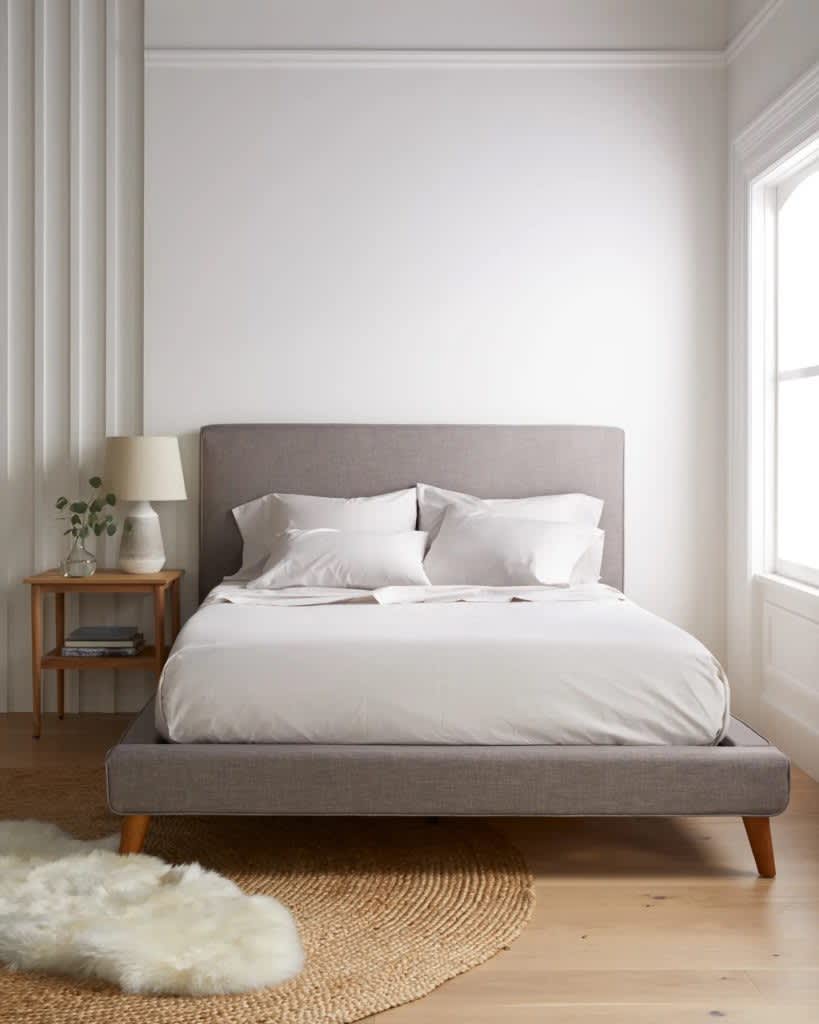
Quince has earned a reputation for high-quality bedding at affordable price-points, and the company’s Organic Cotton Percale Sheet Set is a prime example.
Pros & Cons
Pros
- Each item constructed using durable, extra-long staple organic cotton
- Percale weave ensures excellent breathability
- Customers receive a year-long trial period
Cons
- People who enjoy silky-smooth sheets may prefer a sateen weave
- Adding a flat sheet costs extra
Full Details
Best Luxury
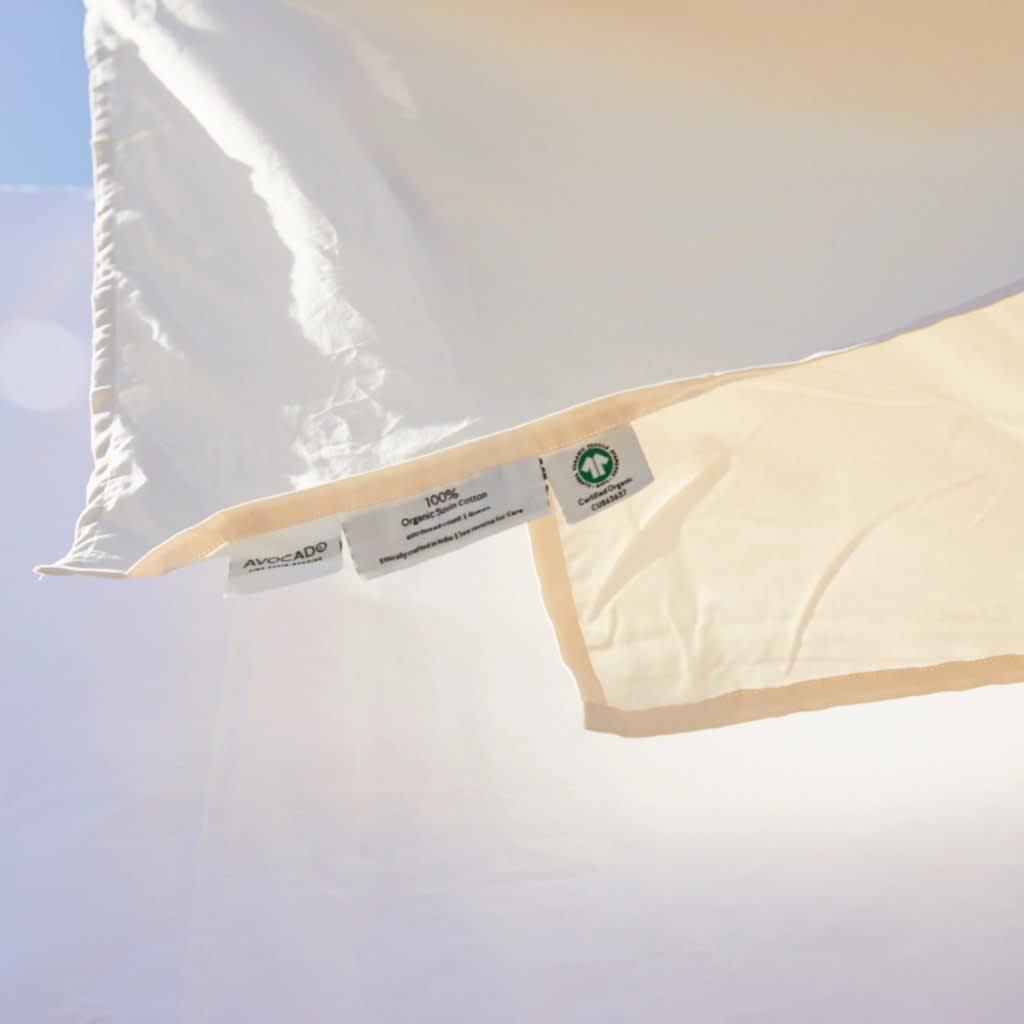
Avocado is a brand best known for eco-friendly, luxurious sleep products. The Organic Superfine Suvin Cotton Sheets demonstrate the brand’s dual commitment to quality and sustainability.
Pros & Cons
Pros
- Extra-long staple Suvin cotton is durable and breathable
- Sateen weave enhances the cotton's naturally soft feel
- Available in standard and deep pocket designs
Cons
- Expensive sticker price may be a dealbreaker
- Higher cost for deep-pocket sets
Full Details
Most Comfortable
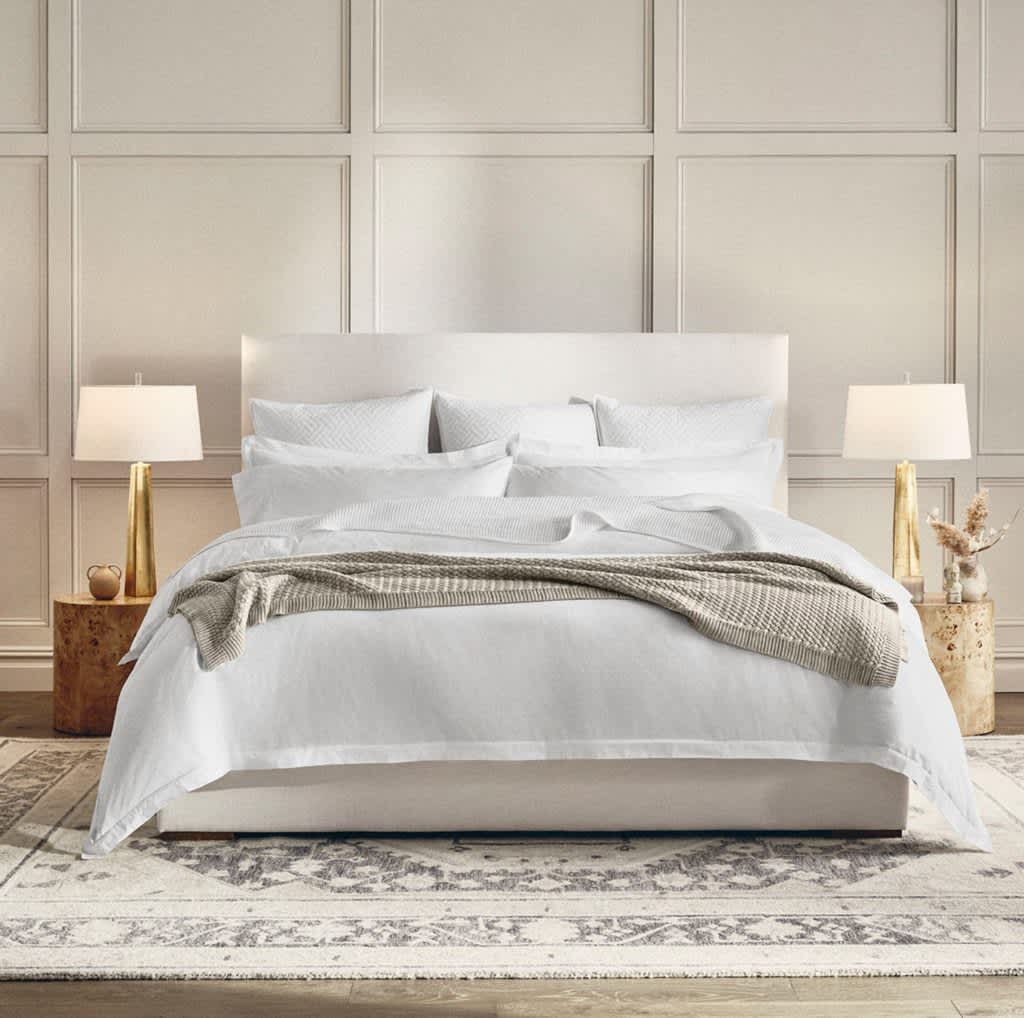
While comfort is a subjective quality that varies from person to person, our team was impressed with the balanced composition of Boll & Branch’s Signature Hemmed Sheets.
Pros & Cons
Pros
- Each item made of sustainably sourced organic cotton
- Long-staple construction helps ensure above-average durability
- Available in eight sizes
Cons
- Not ideal for people who like crisp sheets
- Select patterns cost more
Full Details
Softest
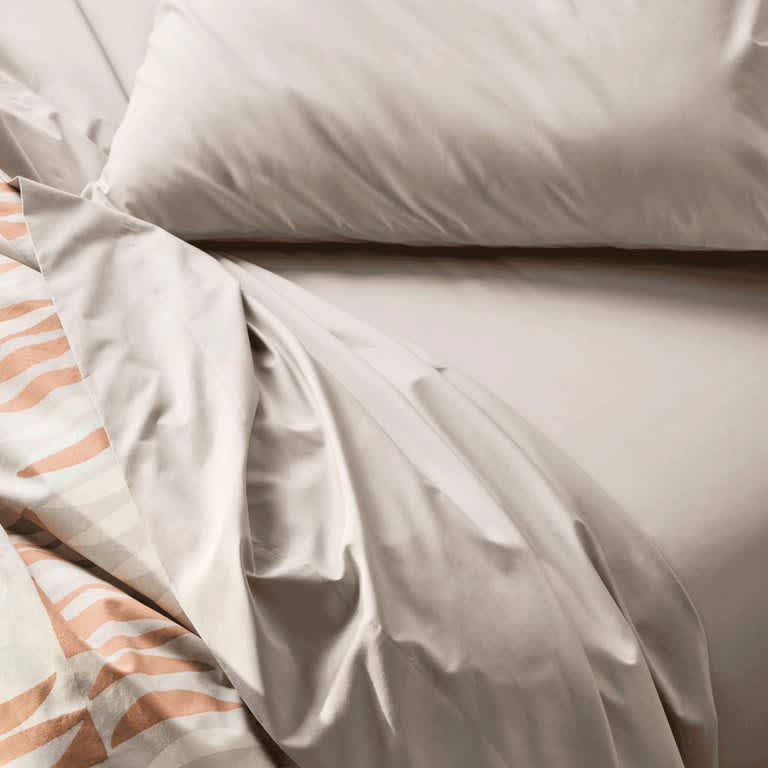
Brooklinen’s Luxe Core Sheet Set consists of sheets and pillowcases made of long-staple cotton, which is known for both durability and exceptional softness. A sateen weave brings out the cotton’s silky feel, resulting in bedding that drapes closely to the body and insulates well against the cold.
Pros & Cons
Pros
- Long-staple composition ensures good durability
- Sateen weave produces an ultrasoft feel and close draping
- Sold in a wide range of colors and patterns
Cons
- May not be optimal for people who prefer crisp bedding
- Special prints and patterns cost extra
Full Details
Best Egyptian Cotton
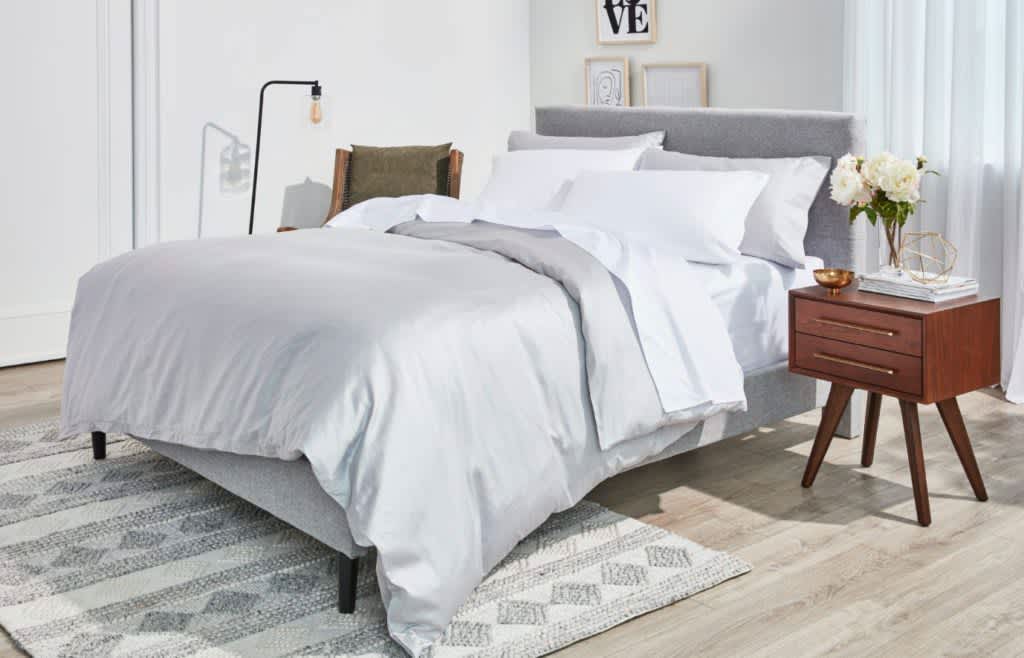
Egyptian cotton’s natural breathability and softness makes it one of the most sought-after bedding materials. Unfortunately, many Egyptian cotton sheet sets are composed of blends that use as little as 10% of the fabric.
Pros & Cons
Pros
- Certified Egyptian cotton offers exceptional durability and softness
- Luxuriously smooth feel thanks to the sateen weave
- Consistent breathability and cooling to suit hot sleepers
Cons
- Pocket depth limited to 15 inches
- Color selection is somewhat limited
Full Details
Best Organic

Sustainable growth and chemical-free production set organic cotton apart from other types of the material. The American Blossom Linens Classic Organic Cotton Sheets is a standout collection due in large part to its luxurious percale weave.
Pros & Cons
Pros
- Certified organic cotton is breathable and sustainably sourced
- Crisp percale weave gradually softens with use and cleaning
- Extra pillowcases for sizes queen and larger
Cons
- Not ideal for people who prefer smooth sheets
- Expensive sticker price
Full Details
How We Test
Cotton sheets are classic for a reason, but they aren’t all created equally. In our Seattle sleep lab, we examine and use every set that we recommend. Our product testing team looks at every set’s fabric to see how well the weave and thread count work together. We also consider where the cotton came from and how it was produced, which is an important indication of quality.
We try each set in the lab and then send it home with testers so they can see how the sheets perform across multiple weeks. When we lie on a set, we record scores for overall comfort and breathability. Customer reviews also play a part in our recommendations — we check verified reviews to see how sets hold up in other scenarios.
What Are Cotton Sheets?
Cotton sheets are a highly versatile choice for bedding shoppers. Depending on their composition, these sheets may feel crisp, smooth, or somewhere in between. Some cotton sheets offer exceptional breathability, while others provide great insulation from the cold. Sheets may be made from pure cotton or blends of cotton and other fabrics like polyester or bamboo-derived textiles.
Generally speaking, cotton sheets offer a more balanced feel than bedding made from other materials. They lack the smoothness of materials like silk and Tencel, but they aren’t as coarse as linen and microfiber. Performance factors like breathability and durability vary by cotton variety and weave.
Benefits of cotton sheets include wide availability, easy cleaning, and natural softening over time. However, price may be a barrier for some shoppers. While cotton sheets aren’t the most expensive type of bedding, you should expect to pay at least $150 for a high-quality, queen size cotton sheet set. Shrinking in the wash and wrinkling are other potential issues.
Who Are Cotton Sheets Best For?
Many different types of cotton sheets are available, making them a good choice for various sleepers. Breathable percale cotton is comfortable for hot sleepers, whereas flannel or sateen is better suited to people who need more insulation when they sleep.
Certain types of cotton may also be appealing if you want a crisp feel, more softness, or a balance of these two characteristics. People who want low-maintenance bedding should consider cotton, as these sheets and pillowcases are almost always fully machine-washable.
How Much Do Cotton Sheets Cost?
The average queen size cotton sheet set costs $150 to $250. Expect to pay more for premium varieties such as Egyptian or Supima. Short-staple cotton and cotton-blend varieties tend to fall on the lower end of the price spectrum. Additionally, sheet sets with duvet covers and other extra accessories tend to cost more than standard sets with flat sheets, fitted sheets, and pillowcases.
How Long Do Cotton Sheets Last?
With proper cleaning and care, the average cotton sheet lasts three to five years. The durability of cotton bedding is tied to its weave and staple length. Percale-weave sheets hold up better over time and resist pilling better than sateen sheets. Twill is also a long-lasting weave. Likewise, long-staple and extra-long staple cotton sheets typically last longer than short-staple cotton sheets.
How to Clean Cotton Sheets
Cotton sheets can usually be washed and dried in household appliances and don’t require spot cleaning, dry cleaning, or commercial-grade washing machines. However, you should always defer to the care instruction tag on your sheets and follow every step to the letter. Laundering your sheets too often can lead to early wear and tear, so many brands suggest infrequent wash cycles. Every few months, you can air dry your sheets to refresh them.
If you want a super high-quality set of cotton sheets, look for options that use long-staple or extra-long staple cotton. They’re really soft but also incredibly durable, which is a hard balance to achieve.
What Are the Different Types of Cotton Sheets?
Cotton sheets come in a wide range of varieties and constructions. Different types of cotton vary in terms of texture, durability, and breathability.
Types of Cotton
While there are dozens of cotton varieties grown worldwide, only a handful are used for bedding and other commercial purposes. The most common varieties of cotton sheets include:
Regular
The catchall term “regular cotton” refers to nonorganic cotton grown in North America. There are no defining weaves or knits associated with regular cotton, and this type of bedding is available at a wide range of prices. Since regular cotton is not organic, it may be grown using chemical aids such as pesticides.
Pima
Pima cotton originated in Peru, but today this extra-long staple variety is grown across the globe. One U.S.-grown variety, Supima cotton, is commonly used for bedding. This type of cotton is known for its exceptional softness, breathability, and moisture control. Pima is also highly durable, and sheets made from this variety can last five years or longer. Due to these qualities, pure Pima sheets can be somewhat expensive.
Egyptian
Egyptian cotton is another extra-long staple variety — but unlike Pima cotton, this variety must be grown in Egypt to be considered authentic. A crisp, breathable composition and excellent durability have made Egyptian cotton popular with consumers. However, cost may be a barrier, as Egyptian cotton sheet sets can cost hundreds or even thousands of dollars.
Shoppers should check to ensure the sheets they buy are certified as authentic 100% Egyptian cotton. Some sets are composed of fabric blends that integrate a small percentage of Egyptian cotton.
Organic
True organic cotton is grown without GMOs, chemical pesticides, or fertilizers. If your cotton sheets are certified as organic, this means the material has met certain standards for growth and cultivation.
The most common organic certifications come from the U.S. Department of Agriculture and Global Organic Textile Standard. If sheets are labeled as organic without certification, then this claim may be misleading. True organic cotton sheets tend to be more costly due to the extra steps companies take to secure this certification.
Cotton Weaves and Knits
Your cotton sheets may be woven using multiple cotton yarns or knit using one continuous yarn. Weaves, such as sateen and percale, are more common. The defining characteristic of a weave is how the lengthwise warp and widthwise weft yarns are joined together.
Percale
Percale is created by weaving warp and weft yarns over and under each other, creating a gridlike pattern. This is a very tight weave, resulting in an initially crisp feel that softens over time as the cotton fibers relax with each laundry cycle. Percale is also highly breathable and well suited to hot and humid climates.
Sateen
Sateen weaves consist of warp yarns woven over and under weft yarns at irregular intervals. For example, a common weave is four-over, one-under. This creates a looser weave and softer feel, giving sateen sheets a silky-smooth texture with little to no crispness. Sateen sheets are ideal for people who want bedding that drapes closely to their bodies. Due to this clingy feel, sateen sheets tend to bottle up more heat and sleep warmer than percale sheets.
Twill
A diagonal pattern is twill’s distinguishing feature. Like sateen, twill consists of multiple warps woven over and under the wefts, but this is done in a zigzag pattern to create the signature structure. Twill is highly durable and resistant to tearing. While not often used in bedding, some brands offer twill sheets. The weave is more common for materials like denim and furniture upholstery.
Jersey
Jersey is a knit created when cotton fibers are looped together, creating a single yarn. You won’t find many cotton jersey sheets, as woven bedding is far more common and accessible. However, people who enjoy soft, pliable fabrics should seek out jersey bedding. Cotton jersey is often used for garments such as T-shirts and skirts.
Think about weave when you’re deciding between cotton sheets. You can have the same exact cotton feel really differently depending on how it’s woven. Percale feels crisp and light, while sateen is silky and drapey.
What Should You Consider When Choosing Cotton Sheets?
There are several considerations to take into account when choosing new cotton sheets. These include aspects of the cotton itself, as well as your own needs and preferences as a sleeper.
Type
As we discussed above in greater detail, you can choose from several types of cotton bedding based on variety and weave. Keep in mind that the type of cotton you choose will likely affect how much you spend on new sheets. Additionally, make sure to verify any certifications or country-of-origin claims from bedding manufacturers before making your purchase.
Weave
Weaves consist of several yarns that float over and under one another. The most common weaves for sheets are percale, which has a crisp feel that becomes softer with age, and sateen, which is silky and smooth from day one. Twill sheets are also available, though far less common. For the most part, weave does not affect price as much as the variety of cotton or the brand.
Think about weave when you’re deciding between cotton sheets. You can have the same exact cotton feel really differently depending on how it’s woven. Percale feels crisp and light, while sateen is silky and drapey.
Knit
Knit sheets are much less common than woven sheets, though dedicated shoppers should be able to track down a set within their budget. Most knit cotton sheets are jersey knit and have a soft, pliable feel. By definition, knits consist of a single yarn looped through itself. This differs from weaves, which integrate many yarns.
Staple
Staple is the measure of a cotton fiber’s length and is directly linked to durability. Long-staple cotton measures 1.25 inches, while extra-long staple cotton can measure up to 2 inches long. These varieties hold up over time and resist pilling. Anything measuring less than 1.25 inches long is considered short-staple cotton and may wear out after a couple years of continuous use. For this reason, short-staple cotton sheets tend to cost much less than their longer-staple counterparts.
Thread Count
Thread count refers to the number of individual threads that constitute 1 square inch of woven fabric. Using thread count to evaluate bedding quality is somewhat tricky. Low thread counts may indicate poor quality and a short lifespan, but a high thread count does not necessarily mean the sheets are superior quality.
Furthermore, brands may make misleading claims regarding the thread counts of their sheets. The “two-ply trick” is a common example. Bedding manufacturers commonly use single yarns consisting of two intertwined strands. Some brands count two-ply yarns as two, rather than one, essentially doubling the thread count without adding much to the fabric’s structure.
A good rule of thumb when choosing a sheet set is to ensure the thread count is derived from counting single yarns, rather than individual strands used for two-ply yarns. Minimum thread counts are also important for each cotton variety and weave.
What Is the Best Thread Count for Cotton Sheets?
Thread counts should be neither too low nor too high. Recommended thread count ranges for different types of cotton include:
- Pima cotton: 200 to 400
- Egyptian cotton: 300 to 400
- Percale weave: 200 to 400
- Sateen weave: 300 to 600
- Twill weave: 200 to 500
Size
The most common sheet set sizes correspond to standard mattress dimensions. These include twin, twin XL, full, queen, king, and California king — though some sets are not available in all six of these sizes. Brands may sell additional sizes such as split king for couples who use adjustable beds. Keep in mind that twin and twin XL sheet sets typically include a flat sheet, fitted sheet, and a single pillowcase, while larger sizes add a second pillowcase to the mix.
Price
Since there are so many types of cotton sheets to choose from, prices vary to a significant degree. Expect to pay at least $150 for high-quality cotton sheets, and more for premium varieties like Egyptian or Pima. Before making your purchase, be sure to read the fine print about delivery and return shipping costs. You may need to pay extra for these services.
Breathability
Breathability is important for most people when it comes to bedding. This characteristic is especially crucial for people who consider themselves hot sleepers, those who tend to sweat in bed, and anyone who lives in an area with exceptionally warm or humid weather. Percale sheets typically sleep cooler than sateen. Likewise, Egyptian and Pima cotton are usually more breathable than regular cotton.

